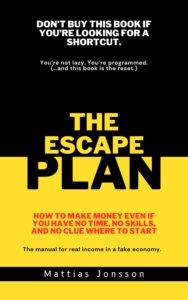Digital nomadism looks glossy on Instagram, but longevity on the road boils down to a handful of forks in that road—places where one choice sets you up to thrive and the other quietly sabotages you.
After seven years bouncing between Da Nang noodle stalls, Balinese beach cafés, Chiang Mai coworking hubs, and tiny apartments in Tokyo, here are the eight decisions I’ve watched turn travelers into lifers—and, just as often, burn them out.
1. Choosing a location-independent income
Your first make-or-break move is deciding how the money arrives.
Freelancing, remote employment, running a productized service, or scaling an online business each come with different ceilings and stability levels. I lived off content-marketing gigs my first year, but feast-or-famine invoices turned every sunset into spreadsheet stress.
Things shifted when I built a retainer-based consulting arm: predictable cash flow meant I could plan visas, housing, and even vacations.
Ask yourself: Could this revenue survive a three-day power cut in Bali? A client ghosting? A tanking Euro? If the answer’s iffy, diversify early—before the next airport Wi-Fi meltdown teaches you the hard way.
2. Basing yourself where the numbers add up
Digital nomads love to chase culture, but bills still send the final postcard.
Research shows many nomads deliberately target lower-cost countries to “maximize income by minimizing expenses.” That’s not just blog lore; Harvard Business Review dissected the trend in 2024, linking long-term sustainability to geo-arbitrage strategies.
My rule of thumb: day-one rent must be under 25 % of monthly revenue, and everyday essentials—coffee, SIM data, gym—need to feel guilt-free.
Tools like Numbeo’s Cost-of-Living Index show that living in Ho Chi Minh City can run at roughly one-third the price of Sydney.
Choose spots where your cash stretches, not snaps, so sudden client churn or currency swings don’t send you crawling back to Mom’s couch.
3. Playing the long visa game
In year two I overstayed a 30-day Thai exemption by, you guessed it, one day. The immigration fine was minor; the stress and wasted time? Brutal.
Decide early whether you’ll “slowmad” (90 + days per stop) or hop every few weeks, then map visa options accordingly. Digital-nomad visas in Portugal, Croatia, or Japan’s upcoming scheme can buy you one to three years of breathing room.
More important is tax residency. Two passports, a single fiscal home, or perpetual travel each carry different paperwork loads. Chat with an international tax accountant before your first six-figure year, not after the audit letter shows up.
4. Treating routines like life support
Jet-lag hero stories sell, but the real pros treat sleep, movement, and deep-work blocks as non-negotiables. In Bali I slipped into late-night Netflix, 11 a.m. starts, and “I’ll work after the surf” promises.
Productivity cratered and clients noticed. Now I anchor my day: lift weights at 7 a.m., write from 9 to noon, calls after lunch, exploring post-4 p.m. The city changes; the skeleton of my day does not.
Think of routines as a portable operating system. They reduce decision fatigue and keep your body clock intact when every new apartment has different curtains, traffic noise, and kitchen utensils.
5. Doubling down on real human connections
Loneliness isn’t just a buzzword; Forbes reported that 20 % of fully remote workers feel “lonely a lot of the day,” citing Gallup data.
The road magnifies that stat—new friends leave every week, and your time-zone-scattered life makes Zoom catch-ups tricky. I learned to build community on purpose: co-living houses, local language classes, and recurring pickleball nights became non-negotiable calendar items.
The decision, then, is whether you’ll hide behind your laptop or proactively design social gravity. Remember: you can’t hug a Slack channel.
6. Buying peace of mind with insurance
A scooter crash in Vietnam cost me $1,800 out of pocket pre-coverage—money I’d earmarked for a Japan ski season. Comprehensive global health insurance plus gear and liability coverage now run me under $120 a month, and they’ve saved north of ten grand since. Boring? Yes. Essential? Absolutely.
Skip the gamble. One ER visit in the U.S. could wipe out a year of border-hopping freedom.
Compare nomad-tailored policies, read the fine print on risky sports exclusions, and store digital copies of everything.
7. Upskilling before you plateau
Remote work means the talent pool is the planet. Last year a 19-year-old developer in Buenos Aires underbid me on a consulting project—and delivered amazing work.
The antidote is constant learning: new frameworks, AI tools, presentation chops. I budget 10 % of income for courses and conferences (virtual or local). Staying employable is a decision, not luck, and it has to happen while you’re earning, not after income dips.
Ask: If I lost my top client tomorrow, could I pitch something fresh next week? If not, book that course tonight.
8. Building a future beyond next month
Too many nomads treat their lifestyle like an extended vacation, forgetting that 65-year-olds also need rent money. I automate 30 % of revenue into index funds and a solo 401(k), then park a six-month emergency stash in a borderless bank.
Compound interest doesn’t care whether you’re in Lisbon or La Paz; it just needs time.
The moment your income covers today comfortably, decide how much funds tomorrow. Future-you will thank present-you when the laptop finally closes for good.
Final thoughts
Staying a digital nomad for the long haul isn’t about chasing more stamps; it’s about making a handful of smart, sometimes unsexy decisions early and repeating them relentlessly.
Nail down how you earn, where and under what rules you live, how you care for your body and mind, and how you invest in relationships, skills, and savings.
Do that, and you’ll still be ordering $1 pho seven years from now—because you want to, not because you have to.
See you out there.

